
Master 3D modeling for film and video games in under 2 years with CG Spectrum. Get personalized career training online from leading 3D artists from major studios, plus career support and access to a vibrant community. Learn more.
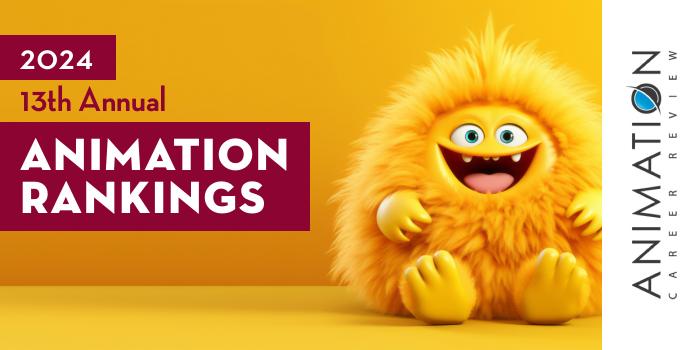
| Ranking | School | City |
|---|---|---|
| 1 | RMIT University | Melbourne |
| 2 | Griffith University | Queensland |
| 3 | University of Technology Sydney | Sydney |
| 4 | Media Design School | Auckland |
| 5 | University of Melbourne | Melbourne |
| 6 | Queensland University of Technology | Brisbane |
| 7 | Swinburne University of Technology | Melbourne |
| 8 | Deakin University | Multiple |
| 9 | Australian National University | Canberra |
| 10 | Billy Blue College of Design at Torrens University Australia | Sydney |
For this ranking we only consider formal degree programs (bachelor's degree or equivalent). For an explanation of our ranking criteria, click here.

The College of Design and Social Context (DSC) at RMIT University (RMIT) houses nine schools, more than 21,000 students from Australia and Vietnam, and 1,000+ academics and instructors. DSC programs are interdisciplinary and range from certificates to PhDs in areas such as art, design, fashion, media and communication, architecture, education, social studies, and property management.
The School of Design is part of the DSC. Within the school are 10 digital design programs, including three options that are ideal for animators. At the undergraduate level, students can earn an Animation and Interactive Media BDes. Graduate students can earn a Master of Animation, Games, and Interactivity (AGI), or a graduate certificate in AGI.
RMIT also provides a vocational program—the Diploma of Screen ad Media (Animation, Gaming and Visual Effects—for students seeking a degree that combines elements of communication, media, and film. Examples of areas of study for this program include video editing, graphic design, digital imaging, 2D and 3D animation design, motion design, visual effects, virtual and segmented reality (VR/AR), sound design, compositing, interactive and game design, concept development, and previsualization.
Graduates of this program are prepared to pursue careers as digital media practitioners across industries. Program alumni are also guaranteed entry into the Advanced Diploma of Screen and Media (Content Creation and Design). Potential job titles include 2D Animator, 3D Animator, Storyboard Artist, Game Designer, VFX Artist, Graphic Designer, Motion Design Artist, and Production Designer.
The Animation and Interactive Media BDes at RMIT is a full-time, studio-based program with solid ties to the creative industry through organizations such as Experimedia, the Australian Centre for the Moving Image (ACMI), and Film Victoria. This three-year program also emphasizes studio-based, hands-on learning from day one; internships with major studios such as LucasArts, Method Studios, and Viskatoons; workshops; guest lecture series; and international learning opportunities with over 165 partner universities worldwide.
In studios and the classroom, Animation BDes students will explore 2D and 3D Animation, Special Effects (SFX), and Interactive Media. Course examples include 2D and 3D Animation; Animation and Interactive Media Studio 1-4; Animation and Interactive Media Design for Movement; Advanced Visual Effects; Sound Design for Animation; and 3D Animation Practice. Students will also have opportunities to take electives to develop skills in areas such as alternative animation, experimental video, and sound design.
In the final year of Animation and Interactive Media BDes program at RMIT, students will collaborate on projects, and produce a professional animated work individually.
Graduates of the RMIT Animation and Interactive Media BDes program are Animators, 3D Visualizers and Modelers, Digital Artists, Art Directors, Character Designers, Motion Graphic Designers, Pre-Production Artists, and Visual Effects (VFX) Artists. Some program graduates teach, while others have launched their own studios or freelance businesses.
Program alumni have exhibited at festivals and conferences such as Annecy, London International Animation Festival (LIAF), ACM SIGGRAPH (Association for Computing Machinery-Special Interest Group on Computer Graphics and Interactive Techniques), and Melbourne International Animation Festival (MIAF). They have also been hired at major studios and agencies such as LucasArts, Viskatoons, and Method Studios (formerly Iloura).
The graduate certificate in Animation, Games, and Interactivity at RMIT University is designed for immediate entry into the field or guaranteed entry into the master’s degree program. Students in this six-month program will take courses such as Animation, Games, and Interactivity Studio 1; The Illusion of Life; and Professional Preproduction. All certificate students have opportunities to attend industry events and work with professional from places such as the Melbourne International Animation Festival, and the creative co-working community known as ACMI X.
Graduates of the RMIT Animation, Games and Interactivity certificate program will have the skills and expertise to pursue careers in areas such as character design, visual effects, 2D animation, interaction design, 3D animation, augmented and virtual reality (AR/VR), motion graphics design, game development, and pre-production art.
The RMIT Master of Animation, Games, and Interactivity takes place in a collaborative, studio environment with access to state-of-the-art equipment and research centers such as the Centre for Games Design Research; participation in industry events; the opportunity to work with organizations such as Film Victoria and ACMI X; and the chance to exhibit at Melbourne International Film Festival (MIFF).
Course examples for the master’s program include Character, Place and Simulation; Animation, Games, and Interactivity Studio 1-3; Advanced Play Design; Research Methods for Design and Digital Media; Animated Narratives; and Professional Preproduction. In year two of the program, students will complete the Professional Research Project (Animation, Games, and Interactivity) worth 24 credit points, and the Animation, Games and Interactivity Industry Portfolio, worth 12 credit points.
The Master of Animation, Games, and Interactivity at RMIT University can be completed in two years full-time or four years part-time. Graduates are prepared to pursue advanced roles in all areas of Animation, Games, and Interactive Media. Program alumni are also prepared to launch their own studios or freelance businesses.
Founded in 1887, RMIT University is one of Australia’s original tertiary institutions—and the largest. The school employs nearly 10,000 global staff members that serve more than 90,000 students across three campuses and two sites in Australia, two campuses in Vietnam, and a research and industry collaboration center in Spain. RMIT also provides programs to students through partners in Singapore, Hong Kong, China, Indonesia, Sri Lanka, India, Belgium, Germany, Austria, and the Netherlands.
The undergraduate and graduate programs at RMIT University are housed across four academic colleges and 16 academic schools. As part of RMIT, all programs are officially recognized by the Department of Education and Training of Australia.

Griffith Film School at Griffith University is the largest school of its kind in Australia and a Toon Boom Center of Excellence (COE). The school has a Bachelor of Animation program that allows students to collaborate peers across Griffith U’s Queensland College of Art (QCA) and Queensland Conservatorium. Students also have the opportunity to collaborate on productions with partner institutions such as Falmouth University and Beijing Film Academy.
Other program features include masterclass programs delivered by industry professionals from Disney, LucasFilm, WETA FX, and Gobelins Paris; access to state-of-the art studios and labs; workshops and seminars; and participation in exchange study tours and film festivals.
The Bachelor of Animation at Griffith University also has three majors including Animating, CGI Technical Direction, and Art Direction. Students in all programs have the option to work with traditional drawn animation; 2D, 3D, or motion-capture digital animation; experimental media; or 3D puppet or clay animation.
All animation students will have opportunities to work on projects for real clients through LiveLab—Griffith Film School’s commercial production division. The Internship Program at Griffith U provides additional opportunities to gain valuable experience with a local studio such as Pixel Zoo Animation Studio, Liquid Animation, or Alt.VFX.
Graduates of the Bachelor of Animation program at Griffith University are successful animators, educators, and entrepreneurs. For example, Griffith U alum Joe Brumm (1998) created the hit children’s TV series Bluey. He has also won awards such as a Logie, an Australian Academy of Cinema and Television Arts Award (AACTA), and an International Emmy Award.
Other program alumni have gone on to become Character Designers, Visual Effects (VFX) Artists, Illustrators, Storyboard Artists, Production Managers, 2D- 3D- and Stop-Motion Animators, Comics and Graphic Artists, Scriptwriters, Art Directors, Game Artists, and Pre-Visualization Artists.
Established in 1975, Griffith University is named after Sir Samuel Walker Griffith, former Queensland Premier and the first Chief Justice of the High Court of Australia, who was the first in the country to introduce degrees in Environmental Science and Modern Asian Studies. With more than 20 schools and departments managed by 4,000 instructors and staff, Griffith U serves over 55,000 students, making it one of the largest universities in Australia.
The school provides more than 200 degree programs across five physical campuses in South East Queensland, Australia, and the Digital Campus. Griffith University is officially recognized by the Department of Education and Training of Australia. Many Griffith U programs are also individually accredited by accrediting agencies such as the Association to Advance Collegiate Schools of Business (AACSB) and the Australian Institute of Physics (AIP).

University of Technology Sydney (UTS) is home to the Faculty of Arts and Social Sciences (FASS), which houses the School of Communication. Within the school are several paths to study animation including the Bachelor of Animation Production (BAP); Dual BAP/Bachelor of Creative Intelligence and Innovation; and a Dual BAP/Bachelor of International Studies.
All undergraduate UTS animation programs feature hands-on experience in the classroom, studios, and through internships; elective options that allow students to develop skills in additional areas of Animation; and Animation studio courses. Students in these industry-focused programs also have opportunities to work on real projects with clients such as ABC Podcasts, VIVID, and the Australia Piano Quartet.
UTS also has long-term partnerships with local animation studios such as Animal Logic, Mighty Nice, Flying Cheeky Little Media, Bark Productions, and Dave Enterprises. UTS partnerships provide additional opportunities to work in Animation before graduation.
The Bachelor of Animation Production at University of Technology Sydney is a three year, full-time program that requires 144 credits, including 108 in core Animation production subjects, 12 in Communication core subjects, and 24 in electives. Course examples include 2D Animation Introduction; Narrative Experimentations in Animation; Digital Media Industries; Introduction to Hybrid Animation; Animation Character Rigging; and Animation Practice.
The BAP program at University of Technology Sydney culminates with an Animation Industry Project, worth 12 credits. During this course, students will work in teams to create short original works in collaboration with an animation industry partner. Students will gain field experience and skills in creative negotiation, presentations, project management, and team work.
Graduates are prepared to pursue titles such as Animator, Character Designer, Concept Artist, VFX Artist, Effects (FX) Animator, Director, Animation Scriptwriter, Stop Frame Model Animator (Claymation), Matchmover/3D Tracker, Augmented and Virtual Reality (AR/VR) Designer, Storyboard Artist, Rigger, Scriptwriter, Editor, Previsualization Artist (Previs) Producer, Modeler, and Compositor.
Dual Degree students have access to everything the BAP program has to offer, and they will complete most of the same Animation coursework. Innovation students will take additional courses such as Transdisciplinary Practice at the Cutting Edge; Leading Innovation; Envisioning Futures; New Knowledge-Making Lab; Past, Present, Future of Innovation; and Creativity and Complexity. International Studies students will take additional courses such as Intercultural Communication; International Research Methods; and German Language and Culture.
The Dual BAP/Bachelor of Creative Intelligence and Innovation at UTS takes four years to complete. The BAP/Bachelor of International Studies takes five years to complete.
At the graduate level, UTS students can earn a Master of Animation and Visualization (MAV). This program was developed in partnership with Animal Logic and provided through the UTS Animal Logic Academy. Program features include a learning modeled on real-world production work structures in a custom-built digital studio; collaborative work practices; and mentoring by active industry professionals. Course examples for the program include the Connected Studio; Challenge Studio; and Collaboration Studio.
The UTS MAV takes one year to complete, full-time. Graduates are prepared to pursue advanced roles in all areas of animation, visual effects (VFX), game art and design, augmented and virtual reality (AR/VR), visualization, simulations, and advertising, among others.
University of Technology Sydney (UTS) traces its roots back to 1964 when the New South Wales Institute of Technology was established. On January 26, 1988, the institute became the University of Technology, Sydney. On January 1, 1990, the Institute of Technical and Adult Teacher Education and the Kuring-gai College of Advanced Education became part of UTS. On August 15, 2015, the comma was removed from the University’s title to become University of Technology Sydney.
Today, UTS is a public research university that serves approximately 44,615, making it one of the largest universities in Australia. University of Technology Sydney provides over 130 undergraduate and 210 postgraduate programs in disciplines from Design, Architecture and Building to Information Technology.

Media Design School (MDS) is the only Unity Authorized Training and Certification partner in New Zealand, and a Houdini Certified School. MDS is also home to country’s oldest 3D Animation program. Accredited by the New Zealand Qualifications Authority (NZQA), which administers the New Zealand Qualifications Framework (NZQF), the program leads to a Bachelor of Art & Design in 3D Animation & VFX.
Students in this 420-credit, project-based program can complete their studies on campus, online, or a combination of the two (hybrid). Student animators will develop technical skills in studio classrooms and state-of-the-art production facilities. First year students will complete the Foundation Mini-Project, worth 20 credits. This component consists of a short 3D production. In the second year of the MDS 3D Animation & VFX program, students will select a specialization in VFX and complete a 15-credit mini project.
Courses examples for the program include Animation: Mechanics, Expressions and Gestures; Visual Effects 2D Compositing; 3D Modeling; Animation: Workflow and Principles; Digital Art I-II; Motion Design Production Techniques; Animation: Non Verbal Communication; 3D Rendering; Motion Design Animation; Advanced 3D Technical Studies; and Advanced Creature Animation.
In the final year of the program (year three), students will complete Team Production I-II, worth a total 85 credits. This component consists of an industry-ready short film. Each student will also complete Advanced Individual Production worth 20 credits. This component allows students to complete a project in their area of specialization. This major production will be entered into the international film festival circuit.
Student films have been official selections or won awards the LA Shorts International Film Festival; San Diego Comic-Con International Independent Film Festival (CCI-IFF); SXSW Film Festival; Toronto Shorts Film Festival; Irvine International Film Fest; SIGGRAPH Asia; Rochester International Film Festival; Annecy International Film Festival; Palm Springs International Animation Fest; British Animation Film Festival; Scandinavian International Film Festival; and the Nashville Film Festival.
Graduates of the 3D Animation & VFX program at Media Design School are prepared to pursue titles such as Animator, Technical Director, Compositor, VFX Artist, 3D Modeler, and Effects Designer. Program alumni have worked on major productions such Avatar and The Hobbit. They have also landed positions as major studios such as Microsoft UK, DreamWorks, Disney, Weta FX, Warner Bros., and LucasFilm Singapore. Program alumni have also worked on major productions such as The Hobbit and Avatar.
Founded in 1998, Media Design School began with a small collection of diploma programs. Today, this private post-secondary institution provides programs in 3D Animation & VFX, Artificial Intelligence (AI), Augmented and Virtual Reality (AR/VR), Game Art, Game Programming, Graphic Design, Interactive Design, Motion Design, Digital Transformation, Information Technology, and Creative Advertising. For students seeking Micro-Credentials or Short Courses, MDS provides more than 30 in-demand options. Media Design School of a member of the Laureate International Universities Network.
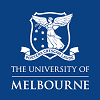
University of Melbourne is home to Victorian College of the Arts (VCA). Established in 1972, the VCA provides programs across the performing arts, media, and visual arts. Part of the Faculty of Fine Arts and Music and co-located with the Melbourne Conservatorium of Music, the VCA also houses an Animation BFA that takes just three years to complete, full-time.
This professional program emphasizes learning that takes place in an intensive and experimental studio-based environment that allows collaboration with peers across all programs in the VCA. Courses for the program explore animation art, character design, worldbuilding, storyboarding, technical production methods, experimentation, screenwriting, research, and idea development.
Course examples include Stories of Place; Animation History and Research; Animation Studio 1-3; Writing Animation; Introduction to Storytelling; Animation Lab 1-3; and Collaborative Production.
All Animation BFA have access to state-of-the-art production facilities including animation and stop-motion studios; editing, mixing, and sound recording suites; viewing rooms for dailies; HD and audio post-production spaces; and cinemas that seat 90 to 220 people.
The Animation BFA program at University of Melbourne culminates with an animated short film. Each student will have the opportunity to animate, direct, write, and edit their own films. Graduates are prepared for graduate study or to pursue a career in the art and entertainment industries. Possible roles include Animator (Film and Television), Screenwriter for Animation, Motion Graphics Artist, Game Artist, Exhibition Artist, Animator (Advertising), Storyboard Artist, Art Educator, and Installation Artist.
Established in 1853, University of Melbourne is the oldest University in Victoria, and the second-oldest in Australia. Serving more than 52,000 students, University of Melbourne is also one of the top five largest universities in Australia. The school provides nearly 700 programs across 120 majors and approximately 90 study areas. University of Melbourne is officially recognized by the Department of Education and Training of Australia, with individual program accreditation by agencies such as the Association to Advance Collegiate Schools of Business (AACSB) and the European Quality Improvement System (EQUIS).

Queensland University of Technology (QUT) houses the Faculty of Creative Industries, Education, and Social Justice, which focuses on research and studies in areas such as film and animation; visual arts; communication and media studies; creative writing; visual communication and interaction design; performing arts; television and digital media; fashion design; and journalism and professional writing.
Within film and animation are two paths two degree options for Animators including the Animation BFA and the Bachelor of Games and Interactive Environments (Animation). Both programs provide unlimited access to state-of-the-art studios and production facilities; internship opportunities; and study abroad experiences lasting one or two semesters, or during any semester break.
The QUT Animation BFA is a studio-based program that explores animated filmmaking, visual effects (VFX), and game development. Students in this program will gain practical skill sin drawing, motion graphics, real-time modeling for virtual environments, and 3D graphics. Course examples for the program include Animation History and Context; CGI Technologies; Motion Design; Animation Aesthetics; Visual Storytelling: Production Design; Digital Worlds; and Advanced Animation Production 1-3.
The Bachelor of Games and Interactive Environments (Animation) at Queensland University of Technology explores the technical and creative aspects of game development as well as emerging animation techniques. Students will master 3D modeling and animation, character animation, motion graphics, and real-time 3D. Course examples for the program include Animation Aesthetics; Digital Worlds; Visual Storytelling: Production Design; Digital Creatures; and CGI Technologies.
Across programs, animation students will work on real, practice-based projects. Students may enhance either degree by adding a second major and/or the Creative Industries minor. Second major examples include Integrated Marketing Communication, Advertising, and Entrepreneurship and Innovation. Minor examples include Interaction Design, Character Animation, Scriptwriting for Interactive Environments, User Experience, Screen Production, Design and Visual Storytelling for Animation, Entertainment, Visual Arts Practice, Digital Media Management, CGI, Public Relations, and Software Technologies.
The Animation BFA program culminates with a final capstone. Games and Interactive students will work in teams to complete and market a final publishable game.
Graduates of the Animation BFA program at Queensland University of Technology are prepared to pursue roles such as Animator, Illustrator, Visual Artist, Computer Games Developer, Multimedia Designer, Post-production Specialist, Film/Television Producer, Motion Graphics Designer, Artists, Web Designer, and Media Industry Specialist.
Alumni have worked on major productions and games such I, Robot; Spider-Man: Far From Home; How to Train Your Dragon; Guardians of the Galaxy; Hellblade; Avengers: Endgame; Disney Infinity 3.0; and Godzilla. Companies that have hired QUT Animation BFA graduates include Disney Animation, LucasFilm, Weta FX, Animal Logic, DNEG, and Rising Sun Pictures.
Graduates of the QUT Bachelor of Games and Interactive Environments program are Animators, Software Engineers, Game Programmers, Post-Production Specialists, Motion Graphics Designers, Multimedia Designers, Digital Content Producers, Visual Artists, Web Designers, Game Developers, and Computer Systems Engineers.
Queensland University of Technology began as Queensland Institute of Technology (QIT) in 1965. The school began operating under its current name in 1989. Today, this public research university serves nearly 50,000 students enrolled in more than 400 programs. QUT academic fields span the engineering, health, law, business, education, science, social justice, and creative industries. Programs at Queensland University of Technology are provided across two campuses and five faculties.
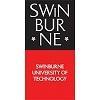
Swinburne University of Technology (Swinburne) is a recognized Toon Boon Center of Excellence. The school is home to the School of Arts, Social Sciences, and Humanities, which houses the Department of Film, Games, and Animation. Within the department are five paths to study animation. Options include a Bachelor of Animation (BA-ANI); Bachelor of Games and Interactivity/Bachelor of Animation (BB-GAMIANI); a Diploma of Screen and Media: Animation; an Advanced Diploma of Screen and Media: Animation; and a Certificate IV in Screen and Media.
All programs provide courses that emphasize hands-on training; opportunities to complete individual and collaborative projects; access to state-of-the-art production facilities, studios, and labs; networking opportunities with studios, creative agencies, and other organizations; and the chance to develop skills in real-world environments through the Swinburne internship program.
Across programs, students will complete animation courses such as 2D Production Techniques for Animation; Advanced Character Design for Animation; Motion Graphics; Writing and Directing for Animation; 3D Production Techniques for Animation; Genre and Moving Image; Screenwriting; Dynamics for Games and Animation; Producing and Production Management for Animation; Storyboarding; and History of Animation.
Students will also take courses such as Principles of Game Studies; User-Centered Design & Evaluation; Action Analysis and Locomotion; and Writing for Interactive Narratives.
The animation programs at Swinburne University of Technology culminate with a final project focusing on animation or games and interactivity. Students will also finalize a professional, industry-ready portfolio.
Graduates of all programs are prepared to pursue roles such as Animator, 2D or 3D Animator, Stop Motion Animator, Storyboard Artist, Screenwriter, Art Director, Cinematographer, Film Editor, and Producer.
Swinburne University of Technology was founded in 1908 as Eastern Suburbs Technical College. Today, the school serves more than 30,000 students across campuses in Hawthorn, Croydon, and Wantirna, Melbourne, as well as Sarawak, Malaysia. Swinburne provides degree and vocational programs in Arts, Engineering, Design, Technology, Health, Business, Science, and Law across several faculties, eight schools, and four departments.
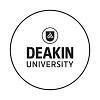
Deakin University (Deakin) is home to the School of Communication and Creative Arts, which provides programs in the areas of Design and Creative Arts; Media and Communications; and Film, Television and Animation. Across all areas, students have access to state-of-the-art and industry-standard equipment, software, and production facilities; dedicated computer labs and Deakin Studios—the school’s virtual production, television, film, and animation studio; and industry partnerships with more than 500 companies, studios, businesses, and other organizations.
Deakin’s School of Communication and Creative Arts also houses the Bachelor of Film, Television, and Animation program, which provides the opportunity to complete an internship at places such as Fox Sports and Dreamscreen. In addition, students may customize their studies through one of three majors and/or one of six minors. Majors include Animation; Producing Screen Content; and Screen Production. Minors include Animation and Motion Graphics; Film Studies; Visual Effects and Virtual Production; Screen Content Production; Scriptwriting; and Producing Screen Content.
All options provide opportunities to work on projects with real clients. Course examples across majors and minors include Principles of Animation; Designing 3D Animated Environments; Character Design and Animation; Writing for Games: Designing Quests and Characters; Animated Motion Graphics; Visual Effects and Animation; Character Animation; Interactive Design Studio; and Character Design and Development for Animation; Screen Producing; Information Design; and Television Studio Production.
As the culminating experience for the Bachelor of Film, Television, and Animation program, students will complete an animated film. Graduates are prepared for to pursue dozens of different careers across the entertainment, advertising, education, and digital media industries. Examples include animation and animation design; visual effects; story development; virtual production; game design and production; visual communication and advertising; VR and AR production; motion graphics; screenwriting; production design; corporate and digital media; production management; and education and eLearning.
Established in 1974 Deakin University serves more than 60,000 students across four campuses in Melbourne, Geelong, and Warrnambool Australia. The school provides more than 200 industry-designed programs across four faculties and 14 schools. This public university is accredited and/or recognized by the Department of Education and Training of Australia, and the Tertiary Education Quality and Standards Agency of the Australian Government (TEQSA).
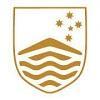
Australian National University (ANU) is home to the College of Arts and Social Sciences. Within the college is the School of Art and Design, which serves 700 students from Australia and across the globe. Established in 1976, the School of Design provides bachelor’s and master’s degrees in the visual arts, curatorship, design, and art history. This includes a Bachelor of Visual Art (BVART) with a major in Animation and Video.
Program benefits include a collaborative environment; a project-based curriculum; access to state-of-the-art computer labs and production studios; internship opportunities; studio courses; and study abroad experiences.
The Animation and Video BVART at ANU requires 144 units, including 48 in the major. The program Explores 2D and 3D Animation, compositing, virtual reality (VR), video, and production. Course examples include Animation: Creative Possibilities; Introduction to Virtual Reality; Character Development; Visual Storytelling; Digital Equipment and Studios; Foundations of Creative Code; Precise Drawing and Model Making; Landscape and Environment; and The Digital Workspace.
The ANU Animation and Video program culminates with a project in the student's area of interest. Students will also create a professional portfolio of their best work. The program takes three years to complete full-time.
Graduates of the Animation and Video BVART at Australian National University are prepared to pursue positions in areas such as film, television, game design, and advertising. Some program alumni go on to launch their own studios or freelance businesses, while others become educators, or pursue graduate study.
Founded in 1946, Australian National University serves over 22,000 students from Australia and 100 other countries. The school sits on a main campus in Canberra, with three additional campuses and two observatories in and around Canberra City. This includes the Siding Spring Observatory (SSO), which is the largest optical observatory in Australia.
Australian National University is a Commonwealth authority under the Public Governance, Performance and Accountability (PGPA) Act of 2013. The school is officially recognized by the Department of Education and Training of Australia. Programs are also individually accredited by numerous accrediting agencies around the world.
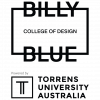
Billy Blue College of Design at Torrens University Australia is a Houdini SideFX Certified School that provides a 3D Design and Animation program leading to a diploma or a bachelor’s. Both options are delivered on campus, online, in a hybrid format, or accelerated. Students may complete the programs on a full- or part-time schedule.
Other program benefits include a free Adobe Creative Cloud Pro license during the entire program; the opportunity to develop 3D skills and pipelines in animation and game development production; real-world projects; experimentation with augmented and virtual reality (AR/VR); and the opportunity to complete a 120-hour internship at a professional studio such as Blowfish, Luminary, or Technicolor Creative Studios.
Students in both programs will learn and create animations and 3D designs using the latest industry software such as Maya, Zbrush, Nuke, Houdini, and Blender. In addition, electives allow students to focus in an area of interest. Elective examples include Emerging Design Technologies (Commercial); Game Production Foundation; Illustration; Motion Graphic Design; and Persuasive Media Production.
Across programs, students will complete courses such as Animation Principles; Design Studio 1-3; 2D Asset Creation; 2D Asset Creation; Game Production Foundation; 3D Asset Creation; Lighting and Look Development; Real-Time Animation Production; and Discover, Define, Develop, Deliver.
Diploma students will complete a digital portfolio and showreel to graduate. The culminating experience for the bachelor’s degree program is the major project and portfolio.
Graduates of the 3D Design and Animation at Bill Blue College of Design at Torrens University Australia go on to pursue titles such as 3D Animator, VFX Artist, Animation Director, AR/VR Artist, Creative Director, Storyboard Artist, Game Artist, 3D Visualization Artist, Motion Graphics Designer, and Illustrator.
Billy Blue College of Design at Torrens University Australia provides more than 25 programs leading to a diploma, bachelors’ master’s or certificate. Many options are delivered online, in a hybrid format, or accelerated. Torrens University Australia is accredited by the Tertiary Education Quality and Standards Agency (TEQSA) and the Australian Skills Quality Authority (ASQA).